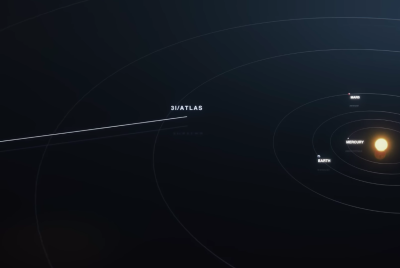Mysterious 1800-km long cloud over Mars returns
The cloud appears at this time of the year over Arsia Mons volcano on Mars, according to the European Space Agency.
A bizarre giant cloud has reappeared hovering over the surface of Mars, according to scientists. It was first seen in the year 2018 on the Red planet.
Described as a "mysteriously long, thin cloud," it sits 20-km above the Arsia Mons volcano on Mars, as per the news statement by European Space Agency. Two images of the cloud were revealed as taken by the Visual Monitoring Camera (VMC) on Mars Express, ESA's space exploration mission that was launched in the year 2003.
Since its reappearance, it has come to be known as a "recurrent feature." Made up of water ice, the cloud hangs over a volcano which has been dormant for nearly 50 million years. Therefore, scientists do not believe it is a result of volcanic activity and continue to investigate.
"We have been investigating this intriguing phenomenon and were expecting to see such a cloud form around now," explains Jorge Hernandez-Bernal, PhD candidate at the University of the Basque Country (Spain) and lead author of the ongoing study.
The massive cloud extends to the area 1800-km in length as shown in images taken on July 17 and July 19. It is believed to appear every Martian year during this season.
"This elongated cloud forms every martian year during this season around the southern solstice, and repeats for 80 days or even more, following a rapid daily cycle. However, we don't know yet if the clouds are always quite this impressive," Hernandez-Bernal explains.
A Martian day, also referred to as sol, is 24 hours, 39 minutes and 35 seconds long and a year is approximately 687 days long.
The cloud forms early morning for a few hours at the same spot before disappearing again. Therefore, it has been named as Arsia Mons Elongated Cloud, AME. Meanwhile, the investigators continue to search for answers about the frequent visitor of the Red Planet.

"The extent of this huge cloud can't be seen if your camera only has a narrow field of view, or if you're only observing in the afternoon," said Eleni Ravanis, a graduate trainee for the Mars Express mission working for the VMC instrument. "Luckily for Mars Express, the highly elliptical orbit of the spacecraft, coupled with the wide field of view of the VMC instrument, lets us take pictures covering a wide area of the planet in the early morning. That means we can catch it!"
© Copyright IBTimes 2025. All rights reserved.




















